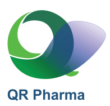Harold W. Holloway¹, Donald K. Ingram², Maria L. Maccecchini³, Nigel H. Greig¹
Poster, January 2009 Winter Conference on Brain Research,
¹ Laboratory of Neurosciences, Intramural Research Program, National Institute on Aging, NIH, Baltimore, MD; ² Laboratory of Nutritional Neuroscience and Aging, Pennington Biomedical Research Center, Baton Rouge, LA; ³ QR Pharma, West Chester, PA.
Major hallmarks of Alzheimer’ disease (AD) are synaptic loss and abnormal protein deposition, particularly of toxic amyloid-ß (Aß) peptide that is derived from amyloid-ß precursor protein (APP). Current AD therapeutic strategies include improving cognitive processes and reducing brain Aß levels. Cholinesterases inhibitors (ChE-Is) and memantine are the only FDA approved drugs for AD, but primarily provide symptomatic relief. Our ChEI, phenserine, lowers APP and Aß in neurons via non-cholinergic post-transcriptional regulation of APP synthesis. Whereas phenserine improves cognition and regional cerebral glucose utilization in AD subjects (Ann Neurol 63:621-31, 2008), like other ChEIs, it is ultimately dose-limited by cholinergically mediated nausea and vomiting. A new series of AD drug candidates were hence designed to optimally match ChEI activity with APP/Aß lowering action to generate agents that substantially lower brain amyloid and yet provide immediate symptomatic improvement: posiphen® and analogs. These agents lower APP and Aß levels in culture and animals, and possess ChEI activities less potent than phenserine to allow administration of greater doses to thereby generate greater Aß inhibition in brain. Ongoing studies are elucidating the mode of action of these compounds on the APP processing pathway. Posiphen® has proven well tolerated in initial phase 1 clinical trials at doses substantially greater than tolerated with phenserine, and achieves concentrations associated with substantial inhibition of Aß in animal models. These results suggest that posiphen® and analogs are promising experimental drugs for diseases where a lowered brain APP or Aß is valued.
Supported in part by the Intramural Research Program, NIA/NIH.
E-mails: Harold W. Holloway, Donald K. Ingram, Maria L. Maccecchini, Nigel H. Greig1
Presentation, July 2009, International Conference on Alzheimer’s Disease
